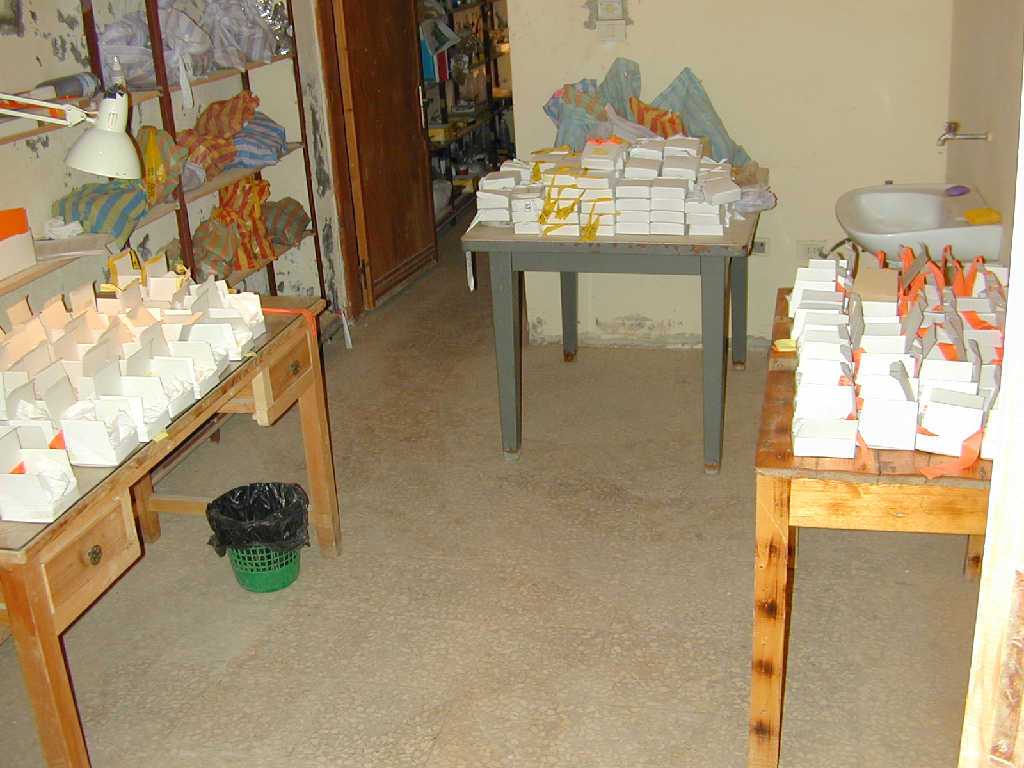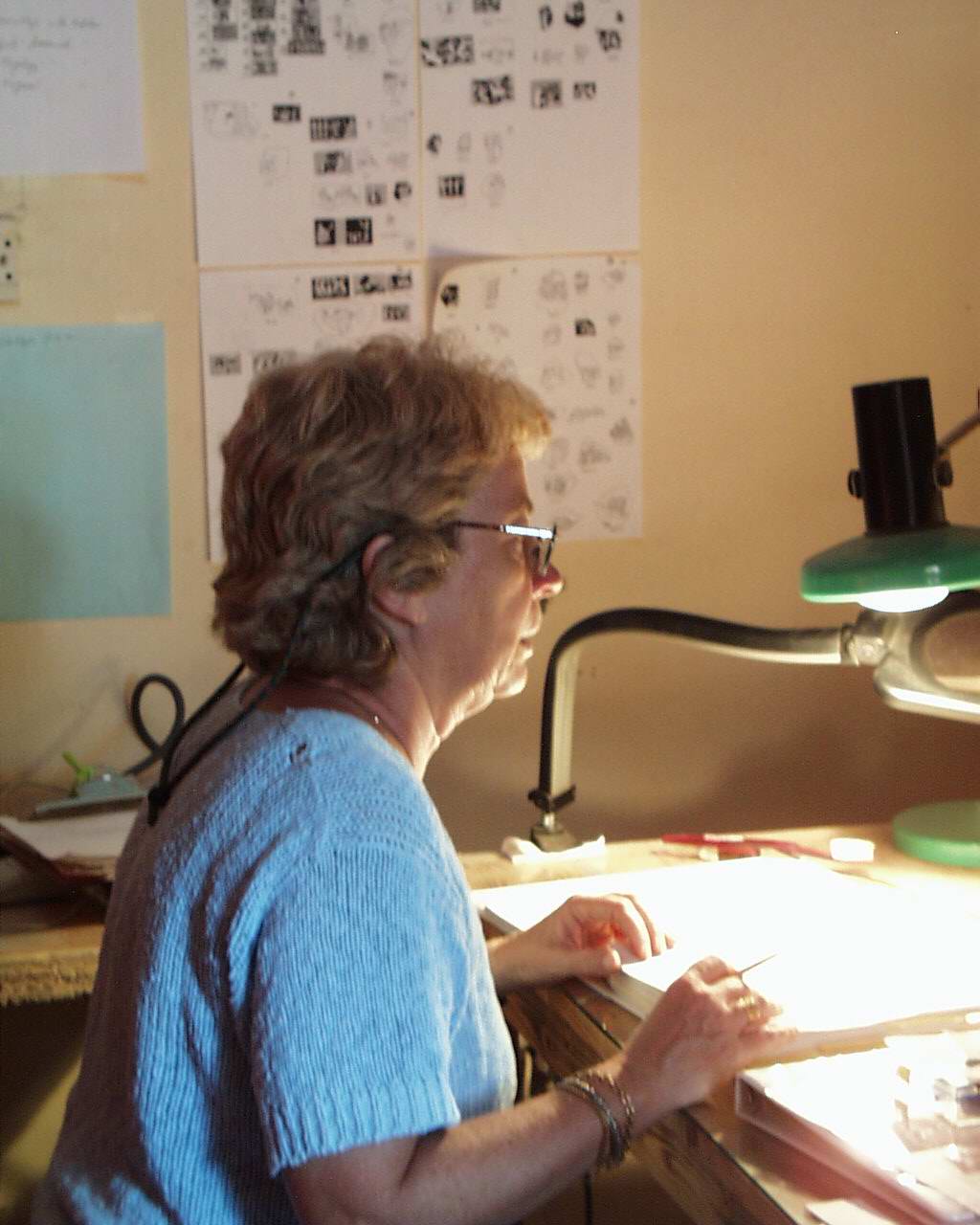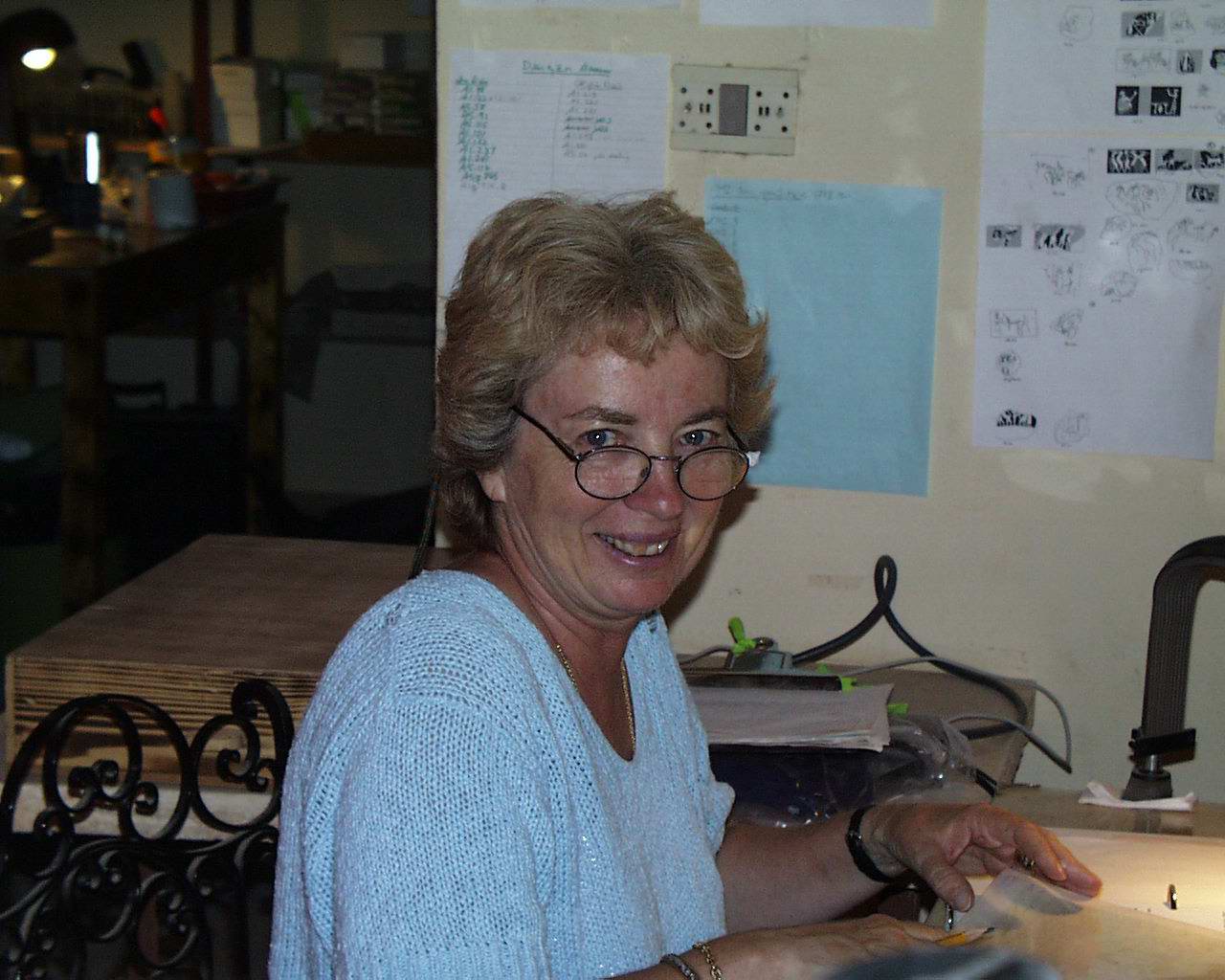Back to top: Field methodology
Early experience
The first group of seal impressions excavated in Mozan came from excavation units K1 and K2, published in Mozan 1 Soundings of the First Two Seasons, 1988, see also the K1 UGR. This deposit of seal impressions was excavated in the exterior portion of the city wall. They mostly came from K1 f16 but a few were found in K2. Based on the ceramics and door sealings we determined that K1f16 had been connected with a storeroom located elsewhere. Over 40 seal impressions were excavated, mostly from f16; they were for the most part burnt door sealings dated to late ED II with the majority dated to ED III. Since these sealings were connected with doors and secondarily burnt their iconography could be reconstructed more easily than smaller and unburnt container sealings which we found in our later excavations, for the most part connected with the royal palace of Tupkish.
When we excavated what turned out to be a royal palace of the Urkesh King Tupkish we discovered a large number of sealings. Since they were small pieces of unburnt clay that had been used to seal containers (jars, baskets, boxes) although a small number of door sealings and tags were also discovered. The initial sealings came from A1 and A5 where they were scattered heterogeneously in the deposits.
Back to top: Field methodology
Conditions of sealings
|
From my experience in Area K I knew that these clay sealings would be difficult to study because these rollings had been produced when the containers were opened and then the fragments were thrown away because their use-life had terminated. Most of the seal impression fragments had never been fired which meant that they were very small and fragile. It also meant that numbers could not be written on them. On finding each piece the numbers were written on surveyors tape which we also used to close the bags of ceramics. I brought to the field a large number of small white cardboard boxes; these were used to keep a single seal impression (see photo). The numbers were written on these boxes in indelible black ink. Most of the seal impressions were given object numbers but some found within a q lot had q-item numbers.
|

|
The seal impressions were brought to me at the end of field excavations on a daily basis and at times, when the excavators could, they were brought immediately on being found. In the beginning, with few seal impressions being found, I cleaned them all as soon as they were given to me. However when a large number came to be unearthed then the conservators dedicated their time to clean them. Many of them were cleaned by Beatrice Angeli and Sophie Bonetti who also wrote descriptions for many.
Back to top: Field methodology
Analysis stage
The analysis stage began with my making a catalog of each seal impression with the description of the object, object measurements, type and color of clay, and a description of the iconography. These catalogs are included in the unit books where the seal impressions were found. Fortunately these seal impressions from the palace sometimes would contain inscriptions identifying the seal owner. It is from them we discovered the ancient name of the city, Urkesh.
Since the fragments were small, very few of the pieces contained enough of the seal image to be easily used in the reconstruction of the entire scene. This meant that I had to keep detailed lists of the images. So I had lists of for example “seated figure facing right holding a cup.” (see 2 photos ) I started with what turned out to be the royal seals: belonging to king Tupkish, queen Uqnitum, and servants of the queen, including the cook Tuli and the children's nurse Zamena. Soon with the help of the images connected with these people, and if available even a small part of the inscriptions, I was able to identify the Urkesh royal iconography; this was an important step because the royal iconography from Urkesh was very different from the contemporary iconography from Tell Brak and from southern Mesopotamia.
|  |
 |
After this identification of the seal iconography I discussed the iconography with the team member who was to draw them (my student Fonda Portales was very helpful at this stage). Then I discussed the iconography with the photographer who was to photograph the seal impressions. Eventually the clearest and most complete seal impressions were sent to the Deir-ez-Zor museum at the end of the season; this museum was the repository of all Mozan objects as the new museum in Hasseke was not finished during all the Mozan excavation seasons.
Back to top: Field methodology